How to Remove Mushrooms From Your Lawn: Identification, Control, and Prevention
- March 20, 2024
- 0 comment
Discover how to remove mushrooms from your lawn with our helpful guide. Learn why mushrooms appear and effective methods to eliminate them, ensuring your lawn remains healthy and beautiful. While they are a natural part of the ecosystem, indicating healthy soil, their sudden appearance can detract from the overall look of your garden. This article will guide you through understanding why mushrooms appear and how you can effectively remove them while maintaining the health and beauty of your lawn.
Why do Mushrooms Grow in Lawn?
Mushrooms sprouting in your lawn are often an indicator of fertile, high-quality soil, although they might not be a welcome sight and could pose potential risks. Mushrooms, along with toadstools, belong to the fungi family and flourish in moist, shaded areas, playing a crucial role in decomposing organic material within your lawn and garden. They are particularly drawn to parts of the lawn that are decaying, heavily thatched, or blanketed with leaves, as well as spots beneath trees where damp leaf litter, rotting wood, and fallen branches accumulate. The primary structure of the fungus resides beneath the soil, where it works to break down organic substances. This decomposition process enhances the soil’s capacity to absorb nutrients, thereby creating an environment conducive to robust lawn growth.
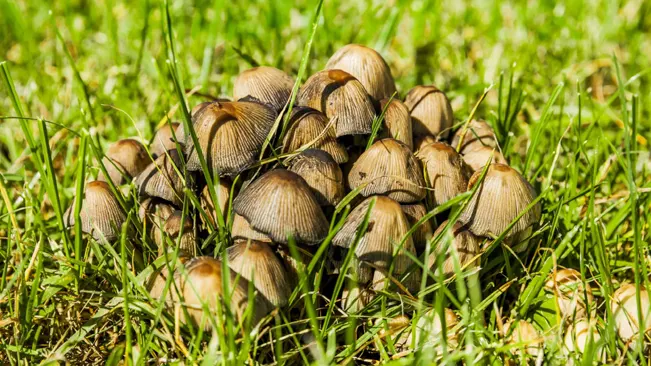
The structures we often refer to as mushrooms or toadstools are actually the reproductive parts of these fungi. These “fruits” of the fungi become visible above the ground when they emerge. Mushrooms propagate by releasing spores into the air, which then settle and can remain inactive in the soil until conditions become favorable. When the right conditions present themselves, these spores can rapidly germinate, leading to the sudden appearance of mushrooms, sometimes just a day or two after the ideal conditions arise.
What Type of Mushrooms Grow in Lawn?
Fairy Ring Mushrooms

These distinctive fungi form noticeable circles or semi-circles in grassy areas, known as fairy rings. As they grow, these rings gradually widen each year. The presence of these mushrooms can lead to varying effects on the lawn; some rings might cause the grass within or around them to perish, while others might result in a ring of grass that appears greener and more vigorous. This difference in lawn appearance is due to the way the underground fungal network influences the soil’s nutrient content and moisture levels.
Puffballs
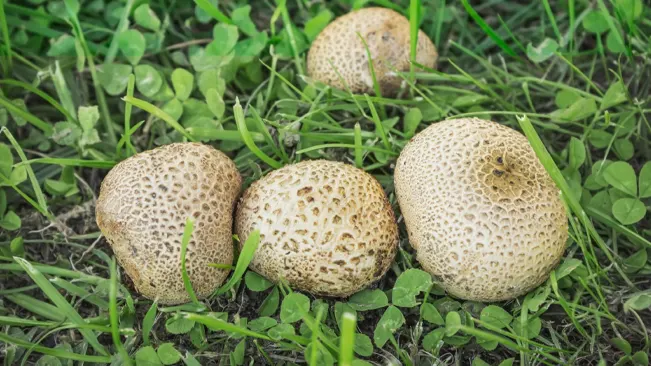
Exhibiting a wide range of sizes, puffballs are easily identified by their globular shape, resembling balls or balloons. Initially, their interiors are solid, but as they mature, they transform into a chamber filled with spores. When the mature puffball is disturbed, it releases these spores in a cloud-like puff, which is a key characteristic of this type of fungus.
Lawn Mower’s Mushroom (Panaeolus foenisecii)
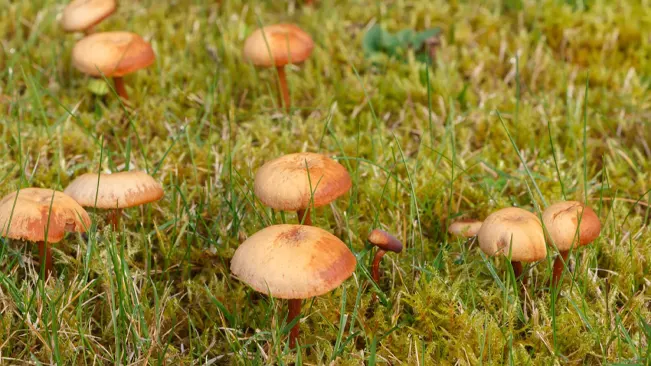
This species is commonly encountered in manicured lawns, particularly following mowing. These small, brown mushrooms are a testament to the underlying soil health, thriving in well-maintained grassy areas. Despite their frequent appearance post-mowing, they do not damage the lawn.
Inky Caps (Coprinus species)
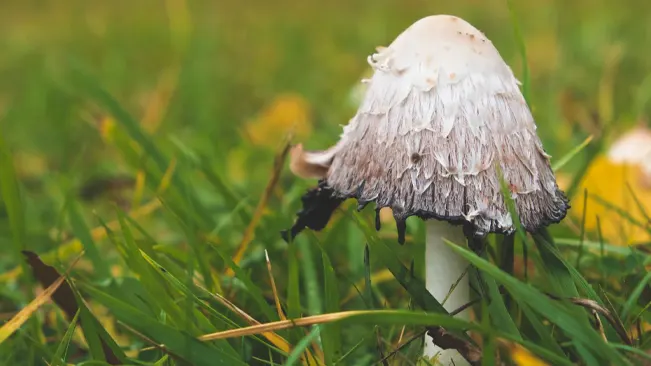
Inky caps are notable for their slender, elongated caps, which undergo a unique transformation as they age; the cap dissolves into a black, inky substance. They are often found in environments rich in decaying organic matter, such as areas with rotting wood or in recently disturbed soils.
Shaggy Mane (Coprinus comatus)
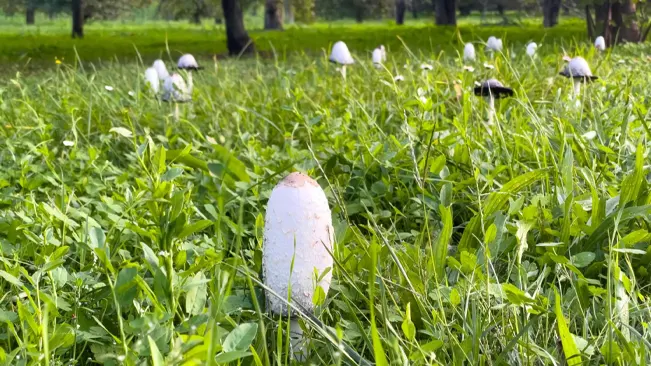
The shaggy mane mushroom is characterized by its elongated, cylindrical cap adorned with fibrous, scale-like structures, giving it a shaggy appearance. Similar to other inky cap mushrooms, the shaggy mane’s cap disintegrates into a black liquid as part of its maturation process, a feature that makes it easily identifiable.
Earthballs (Scleroderma species)
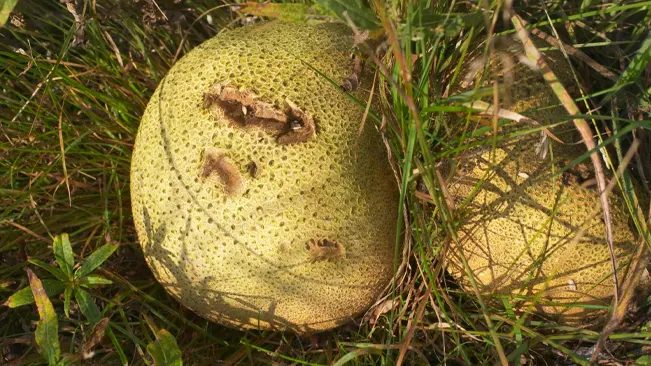
Earthballs bear a resemblance to puffballs but are generally tougher and darker in color. They are inedible and potentially toxic, and their spores are released through openings that form on their outer surface as they mature. Due to their appearance, they are sometimes incorrectly identified as truffles.
Slime Molds

Although not true mushrooms, slime molds can be mistaken for them due to their growth form and appearance on lawns. These organisms feed on microorganisms in the soil, such as bacteria, and can manifest as brightly colored slime or foam-like structures, adding an unusual aspect to the landscape.
Prevention Strategies
Improve Drainage
Ensuring your lawn has proper drainage is essential in preventing mushroom growth. Mushrooms thrive in wet, soggy conditions, so by improving drainage, you can make your lawn less hospitable to them
- Assess the landscape: Identify low spots where water tends to collect and consider regrading these areas to promote water flow away from your lawn.
- Install drainage solutions: For areas with persistent pooling, consider installing French drains or catch basins to redirect water.
- Aerate the soil: Compacted soil can hinder water absorption. Aeration creates small holes in the soil, allowing water to penetrate more deeply and reducing surface moisture.
- Use the right soil: When planting or patching your lawn, choose soil mixes that promote good drainage, such as those with a mix of sand and organic matter.
Reduce Shade
Shade can create cool, damp conditions that are ideal for mushrooms. By reducing the amount of shade your lawn receives, you can dry out the soil and make it less inviting for fungal growth.
- Prune trees and shrubs: Regularly trimming the branches of overhanging trees and shrubs can increase sunlight exposure to your lawn, reducing moisture retention.
- Select shade-tolerant grass: If your lawn must grow in shaded areas, choose grass varieties that are more tolerant of shade and less likely to promote damp conditions.
- Rethink landscaping: Consider redesigning your landscape to minimize large, shaded areas. Use shade-loving plants in the most shaded parts, and keep the sunnier areas for your lawn.
Dethatching
Thatch is a layer of dead grass, roots, and debris that can build up on the soil’s surface, trapping moisture and providing a fertile ground for mushrooms. Removing thatch, a process known as dethatching, can help
- Assess the thatch layer: A thin layer of thatch can be beneficial, but if it exceeds half an inch, it’s time to dethatch.
- Choose the right tool: For small lawns, a thatching rake might be enough. Larger lawns may require a power dethatcher for efficiency.
- Timing is key: The best time to dethatch is during your lawn’s peak growing season when it can recover quickly. This typically means early spring for cool-season grasses and late spring to early summer for warm-season grasses.
- Aftercare: Following dethatching, nourish your lawn with adequate watering and possibly overseeding to fill in any sparse areas, promoting a healthy, dense growth that resists mushroom invasion.
How to Remove Mushrooms from Your Lawn
Removing by Hand
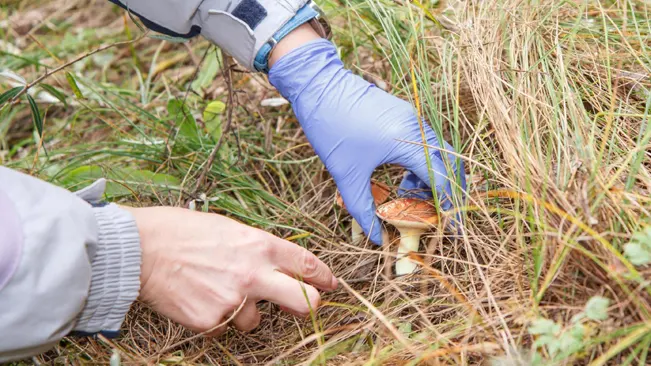
This method involves wearing gloves to protect your hands, as some mushrooms can be toxic. Gently pulling the mushrooms out by hand will remove the visible parts above the ground, but it won’t address the fungi’s root system beneath the soil. This approach is a quick fix but doesn’t provide a long-term solution.
Vinegar Solution
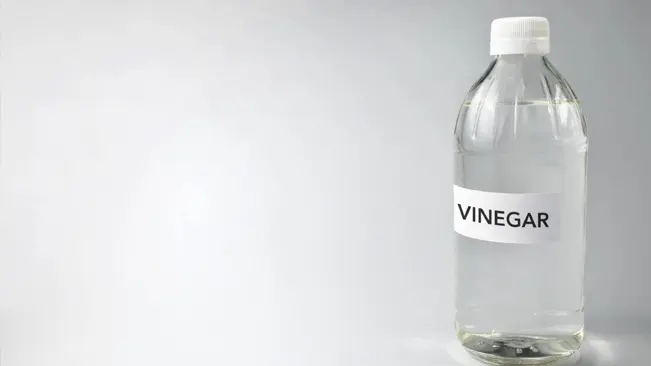
Creating a natural fungicide with vinegar involves mixing one part vinegar with four parts water. When sprayed directly onto the mushrooms, the acetic acid in the vinegar acts to kill them. Caution is advised during application, as the acid can also harm other plants and grass it comes into contact with. Ensure targeted application to avoid unintended damage.
Baking Soda Method
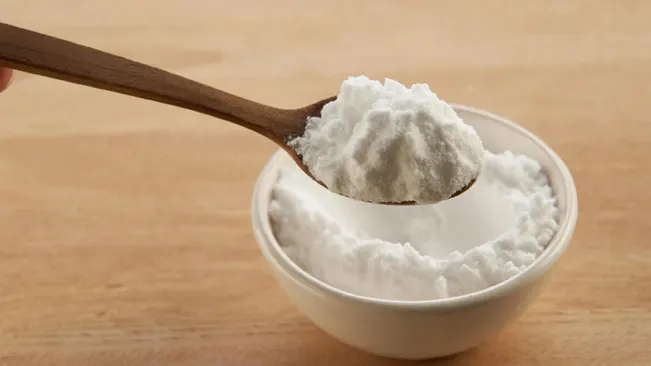
Applying a baking soda solution involves dissolving two tablespoons of baking soda in a gallon of water, then aerating the soil around the mushrooms before applying the solution. This method increases the soil’s pH level, creating an environment less conducive to mushroom growth. Repeated applications may be necessary to see significant results, and it’s important to avoid overwatering to prevent adverse effects on your lawn.
Dish Soap Technique

Similar to the baking soda method, this involves mixing one to two tablespoons of dish soap into three gallons of water. The soapy mixture should be poured over the mushrooms after aerating the surrounding soil to ensure proper drainage. This method also aims to alter the soil’s pH level but requires multiple applications for effectiveness. As with baking soda, be cautious not to use too much dish soap, as an excessively high pH level can inhibit grass growth.
Commercial Fungicides
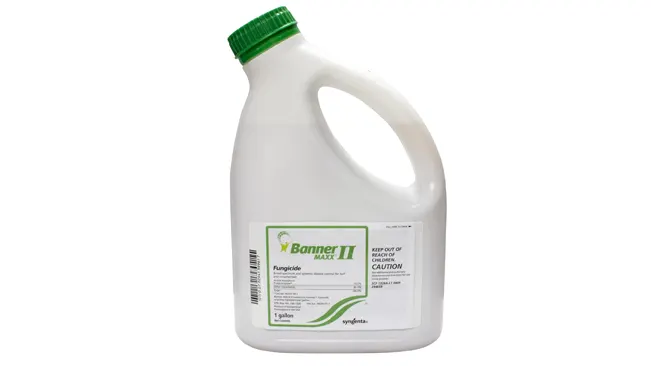
While commercial fungicides can be effective in killing the visible mushroom parts, they, like the methods above, primarily address the symptoms rather than the root cause of the fungi. Preventative measures may offer a more sustainable solution to mushroom growth in your lawn, as fungicides may need to be applied repeatedly to manage new growth.
Common Mistake to Avoid
Over watering Your Lawn
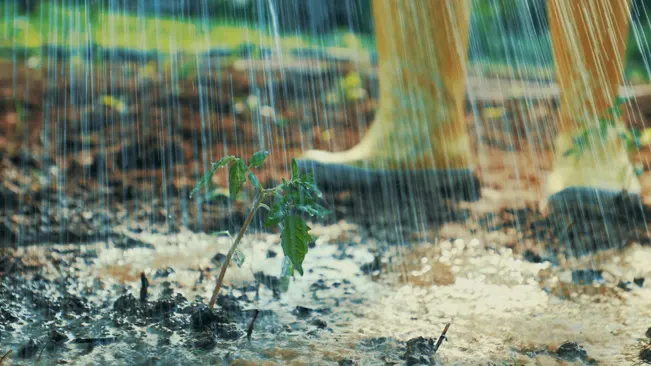
One of the most common mistakes in lawn care, particularly when trying to eliminate mushrooms, is over watering. Mushrooms thrive in moist, damp conditions, and excessive watering can create the perfect environment for them to proliferate. It’s essential to adjust your watering schedule to ensure the soil has time to dry out between watering sessions. This means watering deeply but less frequently, which not only discourages mushroom growth but also promotes deeper, healthier root systems for your grass. Over watering can also lead to other lawn issues, such as root rot and fungal diseases, further compromising the health and appearance of your lawn.
Conclusion
In conclusion, managing mushrooms in your lawn is primarily about creating conditions that are less favorable for their growth. By focusing on prevention strategies such as improving drainage, reducing shade, and dethatching, you can significantly reduce the likelihood of mushroom appearances. Improving drainage ensures that excess water doesn’t pool on your lawn, reducing shade allows for more sunlight and less moisture, and dethatching removes the organic matter mushrooms feed on. These measures, when implemented effectively, not only discourage mushroom growth but also contribute to the overall health and aesthetic appeal of your lawn. It’s important to remember that while mushrooms can be unsightly, they are often a sign of a healthy ecosystem. Therefore, the goal should be to manage rather than completely eradicate them, ensuring a balanced and thriving garden environment.
FAQs
- Why do mushrooms grow in my lawn even though I keep it well-maintained?
Mushrooms typically grow in lawns due to the presence of organic matter, moisture, and shade. They can appear even in well-maintained lawns if these conditions are present. It’s often a sign of healthy soil but may require management to maintain lawn aesthetics. - Are lawn mushrooms harmful to pets or children?
While many lawn mushrooms are harmless, some can be toxic if ingested. It’s best to err on the side of caution and remove mushrooms if you have pets or children who might come into contact with them. - Can I prevent mushrooms from ever growing in my lawn again?
Completely preventing mushrooms can be challenging since spores are always in the air and soil. However, by improving drainage, reducing shade, and managing thatch, you can significantly reduce their occurrence. - Do mushrooms mean my lawn is unhealthy?
On the contrary, mushrooms often indicate that your lawn’s soil is healthy and rich in organic matter. However, their presence might not be desirable for aesthetic reasons, and managing them can help maintain the look of your lawn. - Should I use chemicals to get rid of lawn mushrooms?
Chemical treatments are generally not recommended as a first approach because they can harm beneficial soil organisms and the environment. Natural remedies and cultural practices, such as improving drainage and reducing shade, are safer and often effective alternatives.

Joel Cunningham
Forestry AuthorI'm Joel Cunningham, an expert in pruning and weed management with over a decade of experience. My skills are rooted in formal training and extensive practice, focusing on advanced pruning techniques and efficient weed control. I'm known for my quality work, precision, and deep understanding of plant health and soil dynamics. My contributions extend to educational initiatives where I share sustainable practices and advice, establishing myself as a reliable and authoritative figure in the gardening community.


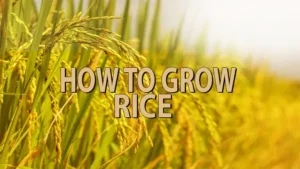

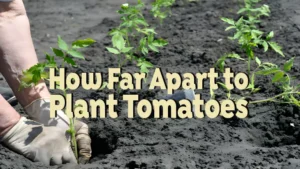
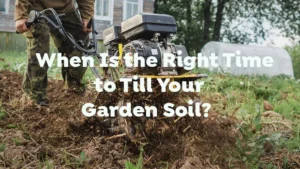
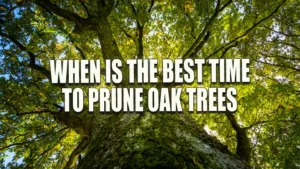





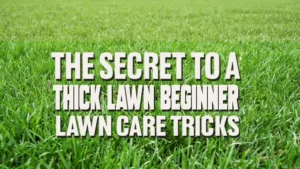
Leave your comment